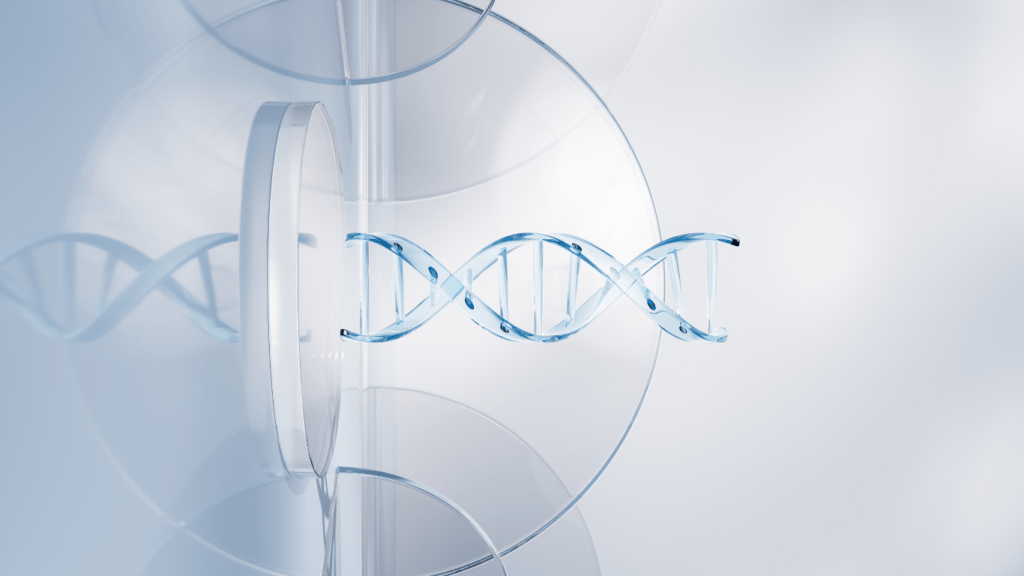Defining Modern Biotechnology
The Core Areas of Biotech Innovation
Modern biotechnology spans diverse sectors. Healthcare uses biotechnology for personalized medicine and diagnostic tools, applying gene editing techniques like CRISPR.
Agriculture benefits from biotech innovations like genetically modified crops and biofertilizers, aiming to improve yield and resistance.
Environmental conservation employs bioremediation to clean up contaminants.
Industrial biotech focuses on sustainable production methods, utilizing enzymes and microorganisms to manufacture chemicals and biofuels.
Key applications include:
- Personalized Medicine: Tailoring treatments based on genetic profiles.
- Genetically Modified Crops: Enhancing crop yield and pest resistance.
- Bioremediation: Using organisms to detoxify polluted environments.
- Enzyme-Based Production: Creating biofuels and biodegradable plastics.
How Biotech Has Evolved Throughout the Decades
Biotechnology’s evolution has been transformative.
In the 1970s, the discovery of recombinant DNA technology allowed for genetic material to be transferred between organisms, leading to the production of insulin.
By the 1980s, polymerase chain reaction (PCR) revolutionized molecular biology by enabling DNA amplification.
The 1990s saw the introduction of genetically modified organisms (GMOs).
The 21st century has been marked by advancements in gene editing, synthetic biology, and regenerative medicine.
- 1970s: Recombinant DNA technology enabled new genetic applications.
- 1980s: PCR became a fundamental tool in molecular biology.
- 1990s: GMOs began transforming agriculture.
- 2000s: CRISPR revolutionized gene editing with unprecedented precision.
These dynamic advancements illustrate biotechnology’s significant impact on various fields, continually reshaping healthcare, agriculture, and environmental conservation.
Pioneering Developments in Biotechnology
Innovations in Genetic Engineering
Genetic engineering has progressed rapidly, introducing precise tools like CRISPR-Cas9.
This system allows scientists to edit genes with unprecedented accuracy, enabling targeted treatments for genetic disorders.
For instance, CRISPR-based therapies are currently being developed to treat conditions like sickle cell anemia and cystic fibrosis.
Additionally, advancements in gene drive technology present new solutions for controlling insect populations.
In agriculture, genetic engineering produces crops resistant to pests and diseases, leading to higher yields and reduced reliance on chemical pesticides.
Golden Rice, enriched with Vitamin A, exemplifies this by addressing nutrient deficiencies in regions where rice is a staple food.
Breakthroughs in Synthetic Biology

Synthetic biology combines engineering principles with biology to design and construct new biological parts, devices, and systems.
One of the most notable achievements is the creation of synthetic DNA, which can be used to produce biofuels, bioplastics, and pharmaceuticals.
Researchers are also engineering bacteria to act as biological sensors, capable of detecting environmental pollutants and toxins.
In medicine, synthetic biology enables the development of personalized therapies and the synthesis of complex drugs that were previously difficult to manufacture.
For example, the microbial production of artemisinin, a key antimalarial drug, has significantly lowered production costs and increased accessibility.
These pioneering developments in biotechnology continue to propel the field forward, offering solutions to some of the world’s most pressing challenges.
The Role of Biotechnology in Healthcare
New Therapeutic Techniques and Drug Development
New therapeutic techniques are emerging from advances in biotechnology, especially in drug development.
Innovative approaches like monoclonal antibodies and stem cell therapy are transforming patient care.
Monoclonal antibodies target specific cancer cells, leaving healthy cells unharmed, which reduces side effects compared to traditional chemotherapy.
Stem cell therapy offers promising treatments by regenerating damaged tissues for conditions like:
- spinal cord injuries
- heart disease
Biotechnology also accelerates drug development.
High-throughput screening allows researchers to test thousands of compounds quickly, identifying potential drugs more efficiently.
CRISPR-Cas9, a powerful gene-editing tool, is facilitating the development of therapies for genetic disorders by correcting mutations directly in the DNA.
For instance, trials for treating sickle cell anemia and muscular dystrophy are showing encouraging results.
Personalized Medicine and Genetic Diagnostics
Personalized medicine tailors treatments to individual genetic profiles, enhancing their effectiveness and minimizing side effects.
Genomic sequencing identifies variations in DNA that affect drug metabolism, guiding the selection of the most suitable medications.
Pharmacogenomics, the study of how genes affect a person’s response to drugs, is particularly useful in oncology, where precise treatments can target specific cancer mutations.
Genetic diagnostics revolutionize disease prevention and management.
Tests like BRCA1/2 for breast cancer risk or APC for colon cancer predisposition help in early detection and preventive measures.
Prenatal genetic testing screens for abnormalities like Down syndrome, enabling early interventions.
Liquid biopsies, a non-invasive diagnostic method, detect cancer biomarkers in the bloodstream, providing insights into cancer progression and treatment efficacy.
Essentially, biotechnology’s integration in healthcare is fostering personalized approaches in therapy and diagnostics, significantly improving patient outcomes.
Environmental and Agricultural Impact
Biotech Solutions for Sustainability
Biotechnology’s impact on sustainability is significant in environmental conservation.
The innovations below contribute to reducing carbon footprints and waste.
- biofuels
- biodegradable plastics
- microbial remediation of pollutants
For instance, algae-based biofuels offer a renewable energy source, potentially replacing fossil fuels and decreasing greenhouse gas emissions.
Biodegradable plastics, produced using bacteria like Pseudomonas putida, break down more easily than traditional plastics, mitigating long-term environmental damage.
Microbial remediation utilizes bacteria to clean up oil spills, heavy metal contamination, and pesticide residues, promoting ecosystem health and resilience.
Advancements in Crop Engineering
Crop engineering has evolved significantly, offering solutions to food security and agricultural sustainability challenges.
Techniques like CRISPR-Cas9 enable precise genetic modifications, enhancing crop resilience and yield.
Drought-resistant crops, such as genetically modified maize, survive in arid environments, supporting agriculture in regions facing climate change impacts.
Pest-resistant crops, like Bt cotton, reduce reliance on chemical pesticides by incorporating Bt toxin-producing genes that deter insects naturally.
Nutritionally enhanced crops, such as golden rice fortified with vitamin A, address malnutrition more effectively.
These advancements in crop engineering foster sustainable agricultural practices, improve food security, and contribute to better public health.


 Alice McClurg - Content Director Alice McClurg leads the editorial team as Content Director at Jackpot Journey Spot. With a keen eye for emerging trends and a deep understanding of the gambling landscape, Alice curates in-depth articles, event highlights, and game overviews. Her expertise helps guide readers through the ever-evolving world of gambling, ensuring they stay informed and entertained.
Alice McClurg - Content Director Alice McClurg leads the editorial team as Content Director at Jackpot Journey Spot. With a keen eye for emerging trends and a deep understanding of the gambling landscape, Alice curates in-depth articles, event highlights, and game overviews. Her expertise helps guide readers through the ever-evolving world of gambling, ensuring they stay informed and entertained.
